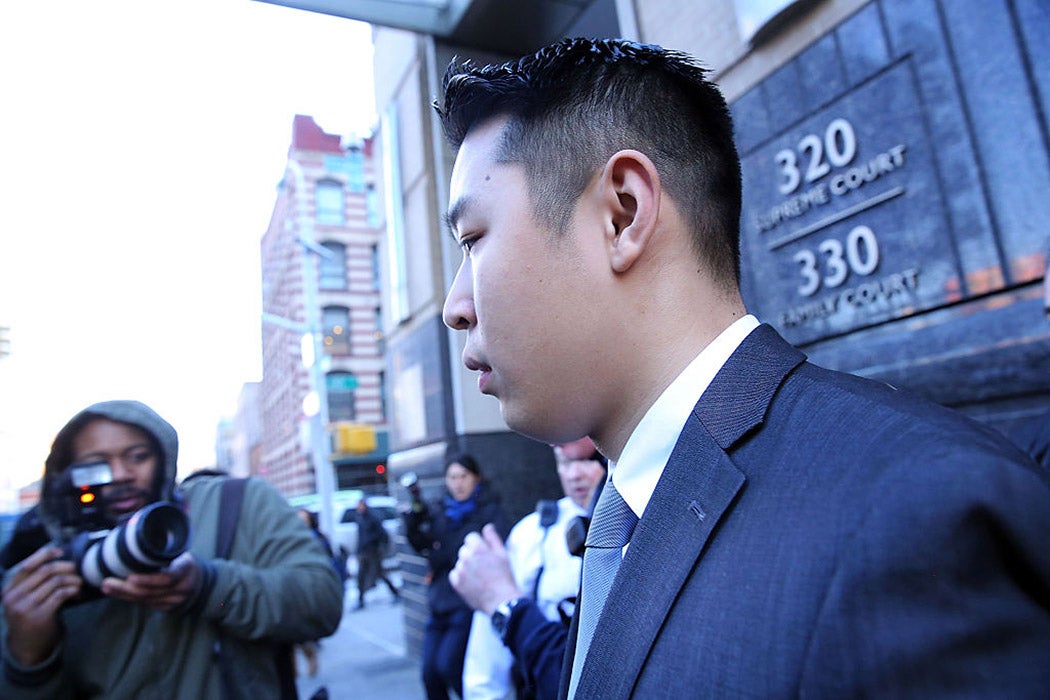Some Asian Americans around the country have been protesting the conviction of Peter Liang, the Chinese American police officer convicted of second-degree manslaughter in the death of Akai Gurley, an unarmed black man. In 2014, Liang was on a routine “vertical patrol” of a Brooklyn housing project when one of his bullets ricocheted off the wall and struck Gurley.
The protesters feel that Liang’s conviction is unfair given that he did not directly shoot Gurley, and that he is being scapegoated for the fact that white officers—such as Darren Wilson, who shot and killed teenager Mike Brown in Missouri in 2014—have been acquitted. The case, widely discussed in the Chinese-language media, is being held up as a reason the Asian American population—known for lower voter turnout—should be more politically engaged.
Asian-Americans have long held a complex place within the American racial hierarchy, writes researcher David Quan. They’ve often been called the “model minority,” because they tend to be better educated and more affluent than other Americans, white and minority alike. However, the term often erases the historical and continuing discrimination many Asians experience.
Asian populations have long been the target of discriminatory legislation, starting with the Chinese Exclusion Act of 1882, and reaching into the 20th century with the internment of Japanese Americans during World War II. But there are also quieter, less reported cases of discrimination. For example, though the median incomes of Asian Americans are quite high, they are not doing well in relation to their levels of education. They are often overqualified for their jobs. Quan details several cases where qualified Asian attorneys were denied entry to the bar. The underrepresentation of Asians in law is particularly notable.
Quan points to Asian culture as a reason for their low rates of entry into the legal profession and, possibly, political engagement. Because Asian culture favors deference to authority, he argues, Asians tend to avoid confrontation and try hard to assimilate into American culture, traits that are at odds with an adversarial legal and political system. In addition, many families prize quantitative skills over more qualitative and verbal skills, and consequently push their children into STEM fields instead of towards professions that require a liberal-arts education. For those who do attend law school, there are few Asian role models to inspire and mentor them. Employment discrimination against Asian populations—unlike black and Hispanic populations–is rarely documented.
The Peter Liang case has proven divisive: Asian Americans both support him and argue that, even if his race was factored into the decision, his conviction was justified. Ultimately, the case does shed light on a population in a tricky place, buoyed by a “model minority” status that praises them even as it erases some of the continued discrimination they face.







